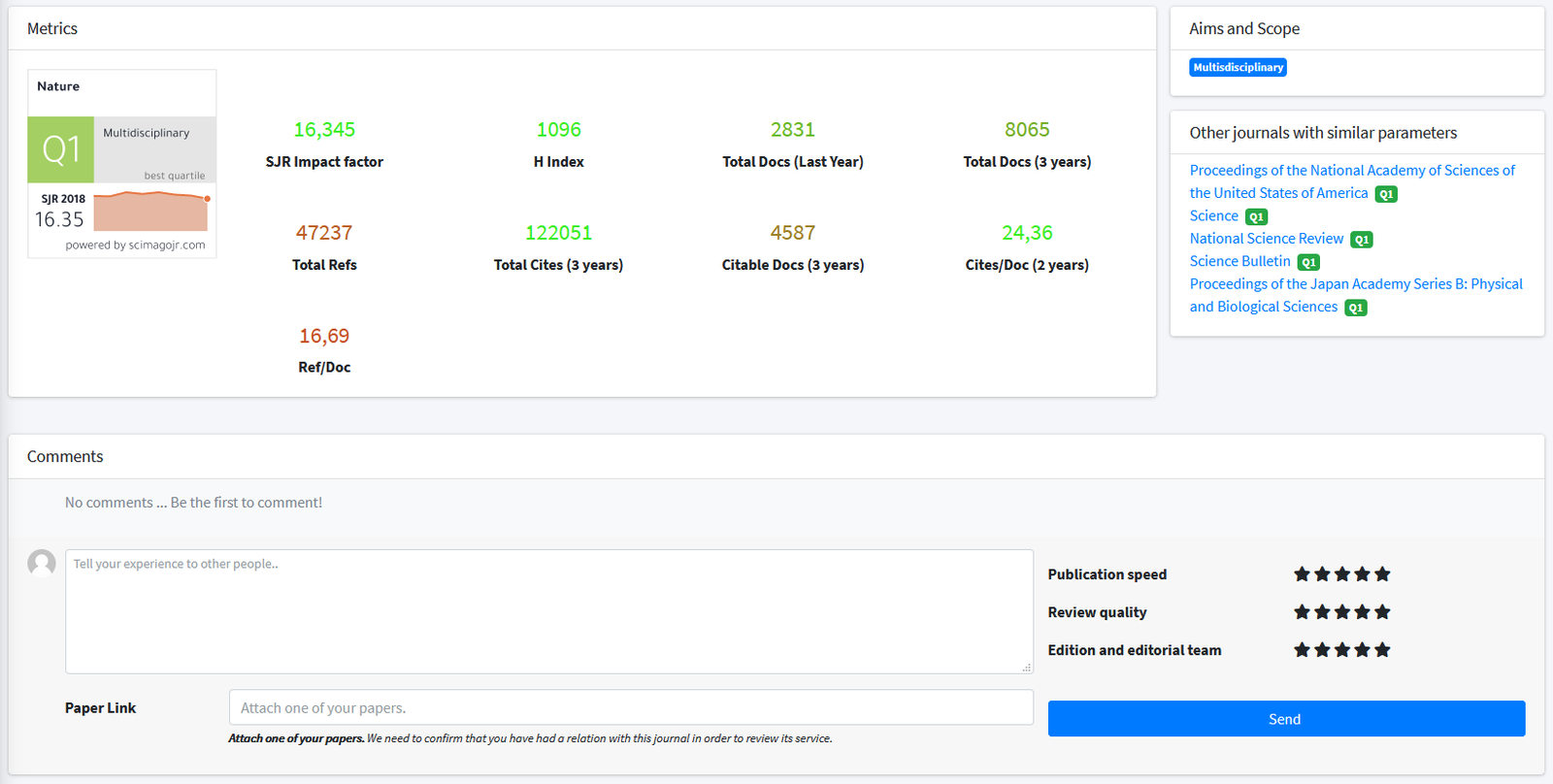
ISSN: 1538-7933
Journal Home
Journal Guideline
Journal of Thrombosis and Haemostasis Q1 Unclaimed
Journal of Thrombosis and Haemostasis is a journal indexed in SJR in Medicine (miscellaneous) and Hematology with an H index of 204. It has a price of 2600 €. It has an SJR impact factor of 3,086 and it has a best quartile of Q1. It is published in English. It has an SJR impact factor of 3,086.
Journal of Thrombosis and Haemostasis focuses its scope in these topics and keywords: venous, pulmonary, patients, review, systematic, management, embolism, risk, bleeding, clinical, ...
Type: Journal
Type of Copyright:
Languages: English
Open Access Policy: Open Choice
Type of publications:
Publication frecuency: -


2600 €
Inmediate OANPD
Embargoed OA0 €
Non OAMetrics
3,086
SJR Impact factor204
H Index358
Total Docs (Last Year)1109
Total Docs (3 years)12603
Total Refs8687
Total Cites (3 years)841
Citable Docs (3 years)9.11
Cites/Doc (2 years)35.2
Ref/DocOther journals with similar parameters
Annual Review of Public Health Q1
Annual Review of Pathology: Mechanisms of Disease Q1
The Lancet Global Health Q1
Annual Review of Clinical Psychology Q1
JAMA - Journal of the American Medical Association Q1
Compare this journals
Aims and Scope
Best articles by citations
Factor XIII in bronchoalveolar lavage fluid from children with chronic bronchoalveolar inflammation
View morePrevalence of inherited bleeding disorders in cases of idiopathic menorrhagia: a case of five blind men describing an elephant
View morePathogenic antibodies to coagulation factors. Part II. Fibrinogen, prothrombin, thrombin, factor V, factor XI, factor XII, factor XIII, the protein C system and von Willebrand factor
View moreFORUM
View moreFibrinogen as predictor of ischemic stroke in patients with non-valvular atrial fibrillation
View moreAn association analysis between genetic polymorphisms of matrix metalloproteinase-3 and methylenetetrahydrofolate reductase and myocardial infarction in Japanese
View moreA different view of 'Toc', as I knew him
View moreAntibodies to tissue factor pathway inhibitor are uncommonly detected in patients with infection-related antiphospholipid antibodies
View moreTemporary inferior vena caval filter use in pregnancy
View moreInfluence of membrane-bound tumor necrosis factor (TNF)-alpha on obesity and glucose metabolism
View moreShould glycoprotein IIb/IIIa inhibitors be used during all percutaneous coronary interventions? No
View moreShould glycoprotein IIb/IIIa inhibitors be used during all percutaneous coronary interventions? Yes
View moreThe plasma hemostatic proteome: thrombin generation in healthy individuals
View moreCdc42-dependent F-actin dynamics drive structuration of the demarcation membrane system in megakaryocytes
View moreNatural history of arterial and venous thrombosis in children treated with low molecular weight heparin: a longitudinal study by ultrasound1
View moreSalvianolic acid A inhibits platelet activation and arterial thrombosis via inhibition of phosphoinositide 3-kinase
View moreModerate dose oral anticoagulant therapy in patients with the antiphospholipid syndrome? No
View moreThe benefits of excess EPCR
View moreRevisited role of microparticles in arterial and venous thrombosis
View moreLack of secondary microthrombosis after thrombin-induced stroke in mice and non-human primates
View moreAn informed consent form for treatment with oral anticoagulants
View moreLupus anticoagulants and anticardiolipin antibodies: personal reminiscences, a little history, and some random thoughts
View moreMore on: intensive factor VIII exposure and inhibitor development in mild hemophilia A
View morePlatelet-derived sphingosine 1-phosphate induces contraction of coronary artery smooth muscle cells via S1P2
View more If you are a journal editor you can claim the journal profile and add new information for the visitors.
If you are a journal editor you can claim the journal profile and add new information for the visitors.
Comments